The beginnings and development of watches
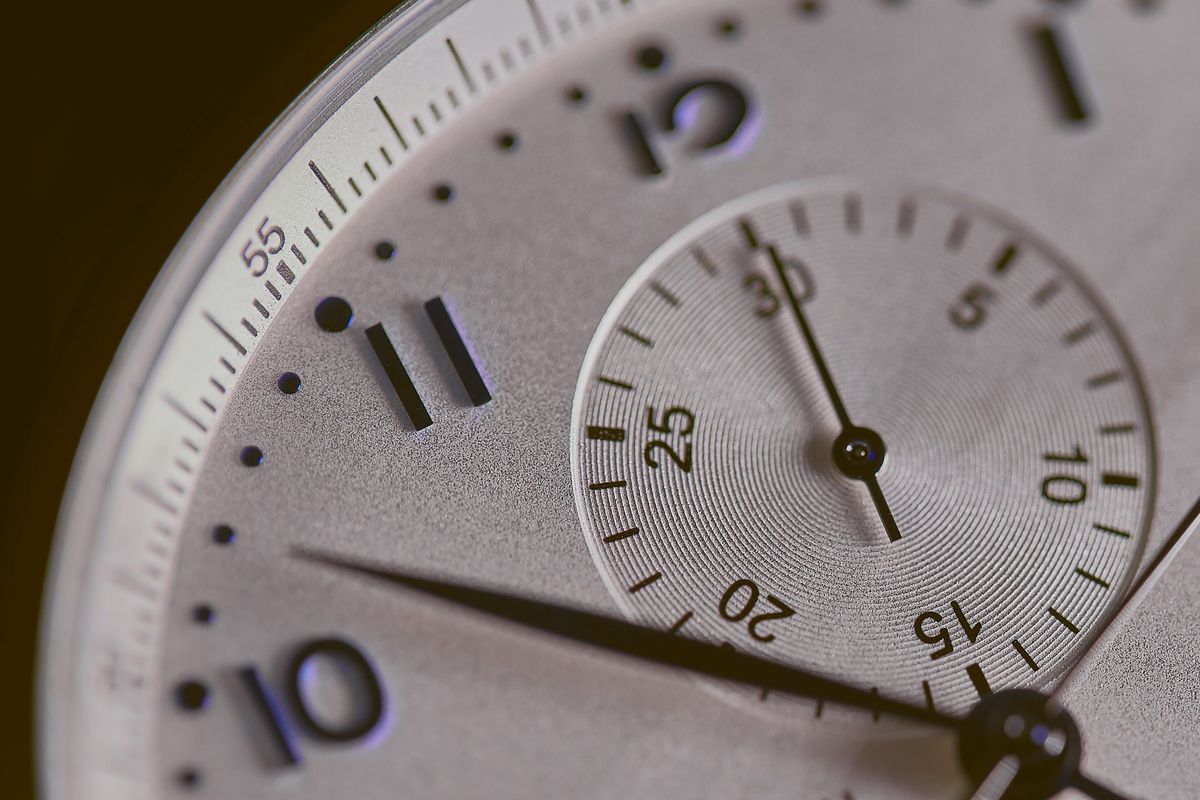
The development of watches from portable spring-driven clocks, which first appeared in the 15th century, began in 16th-century Europe.
From the 16th century to the middle of the 20th century, engineers and inventors created the mechanical watch, which was driven by winding a mainspring that drove gears and then moved the hands while keeping time using a rotating balance wheel. The development of the quartz watch, which used a quartz crystal that vibrated to keep time and was powered by electricity in the 1960s, marked a sea change for the watchmaking business. The “quartz crisis” was the process through which quartz timepieces replaced mechanical watches as the dominant product on the market in the 1980s.
Even though mechanical watches are still popular, quartz mechanisms are found in the vast majority of timepieces as of 2020.
According to one theory on the word’s etymology, the Old English word woecce, which meant “watchman,” may have been the source of the phrase because town watchmen used timepieces to keep track of their shifts.
Another hypothesis postulates that the phrase was coined by sailors in the 17th century who timed the length of their shipboard watches using the new devices (duty shifts).
The Oxford English Dictionary first uses the word “watch” in reference to a timepiece in at least 1542.
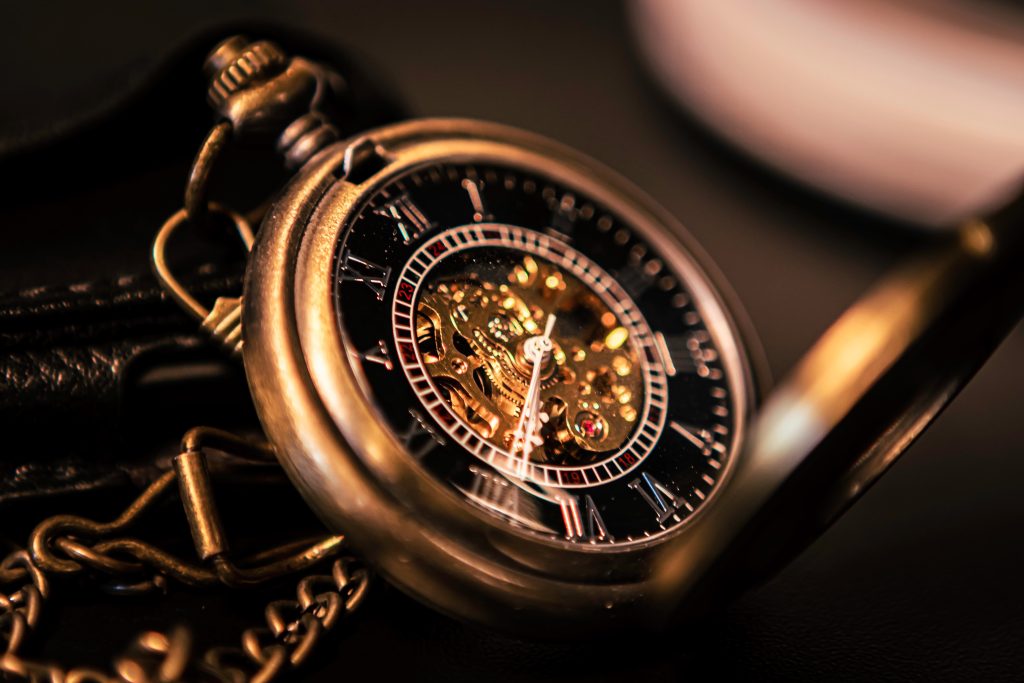
Watches first appeared as instruments for navigation in history.
Who was the watch’s inventor, and why? We need to travel back in time many hundred years to understand the invention of the watch. Rewind to the 15th century, when the watch’s history first began.

The time was necessary for explorers to navigate at sea. On the basis of the stars, the latitude could already be computed with accuracy, but the longitude required knowledge of the local time. In the tropics, a divergence of 28 km would already exist if the clock was off by one minute. Thus, the demand for an accurate navigational tool led to the creation of the watch.
The so-called quadrans, a disc whose time could be established using protractors, are credited with beginning the history of the watch. The first mechanical clocks that could be relied upon for accuracy used a pendulum. This clock couldn’t be used in the sea or in a pocket since it required to hang softly
Clock-watch
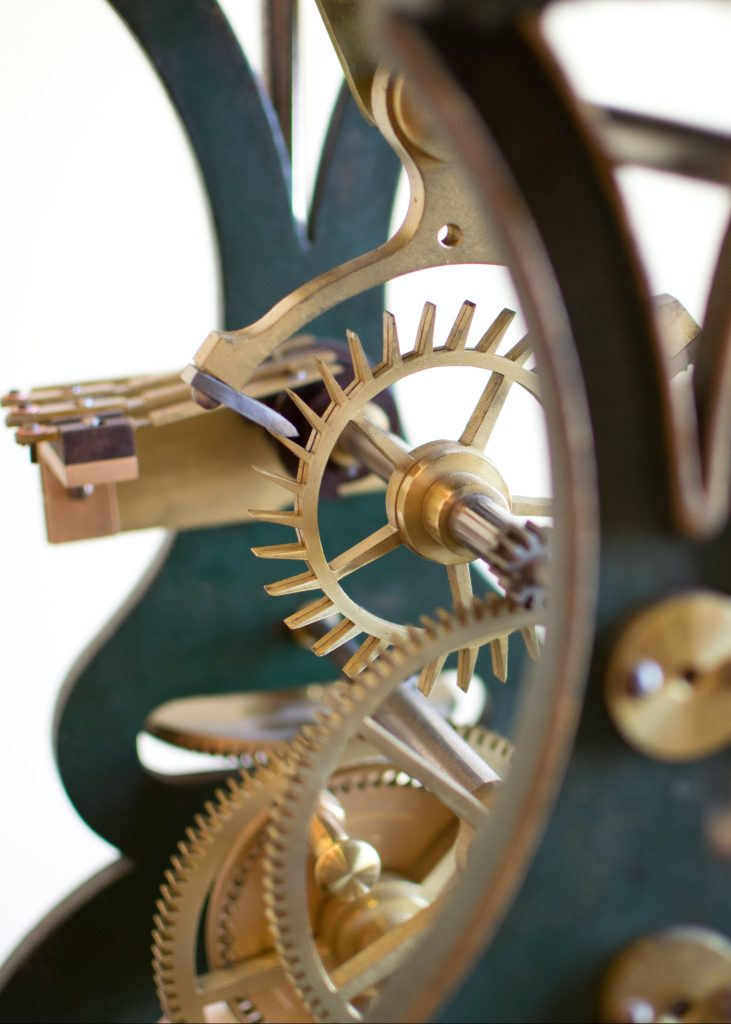
Then, at the start of the 16th century, it took place. The initial portable clock with a spring mechanism was created by a German named Peter Henlein from Nuremberg. This is considered the initial watch. Due to the oval cage, these watches are also referred to as “Nüremberg eggs.” Allowing the mechanical watch to run precisely remained an art. With their invention, the Swiss mechanics Jacob Zech and Gruet modified this. They created a device that, when the spring was wound tightly, offered substantial resistance.
Pocketwatch
Men started wearing timepieces in their pockets rather than as pendants as pocketwatch styles changed in the 17th century (women’s watches continued to be worn as pendants into the 20th century). The introduction of waistcoats by Charles II of England is credited with causing this in 1675. The fact that watches of the era were notoriously prone to fouling from exposure to the weather meant that carrying them securely in the pocket was the only reliable way to keep them safe from harm. This was not merely a matter of taste or prejudice. Their shape changed to take on the traditional pocketwatch shape, which is rounded and flat with no sharp corners. Around 1610, glass was employed to hide the face.
The term “watch fob,” derived from the German word “fuppe,” or “pocket,” was first used. The “Albert chain” accessory, created by Prince Albert, the consort of Queen Victoria, later in the 1800s was intended to clip a man’s pocket watch to his outerwear. By opening the rear, attaching a key to a square arbour, and rotating it, you may wind and set the watch.
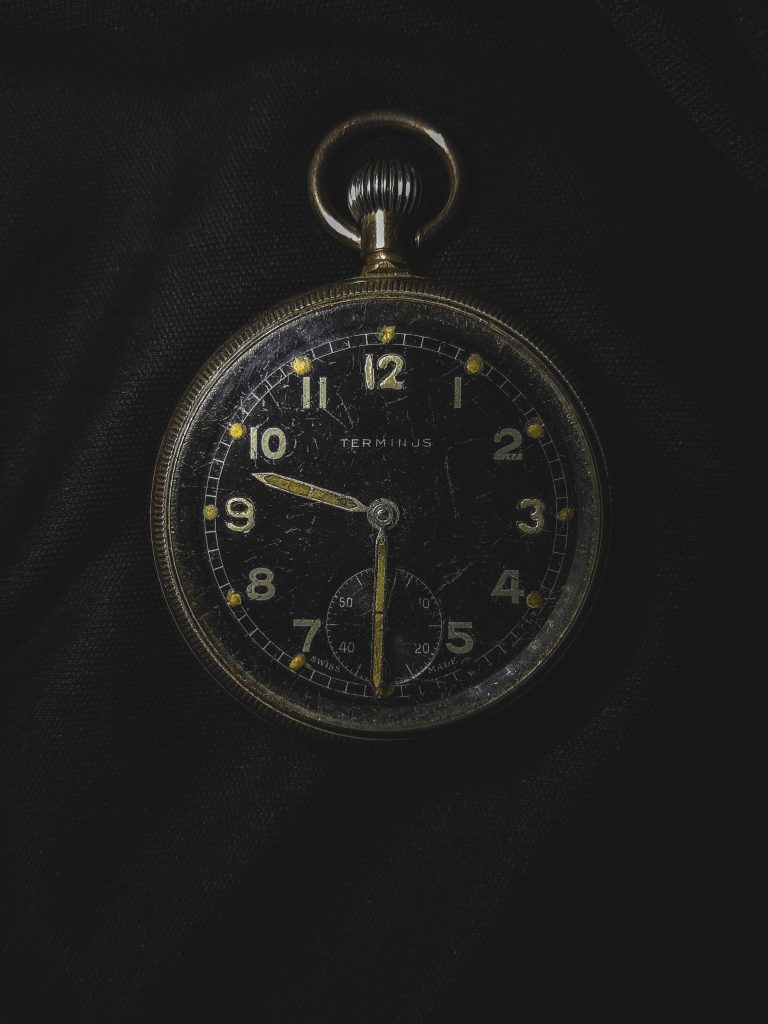
The verge escapement, which caused a foliot, a bar in the shape of a dumbbell with weights on either end, to oscillate back and forth, served as the timekeeping mechanism of these early pocketwatches. This escapement was invented in the 13th century. However, a source of error that wasn’t present in clocks driven by weights was introduced by the mainspring. A spring’s force is not constant; rather, it decreases as it unwinds. Changes in driving force affect the rate of all timekeeping systems, but the primitive verge and foliot mechanism was particularly sensitive to these changes, therefore early watches slowed down as the mainspring depleted. Mechanical timepieces have had this issue, known as loss of isochronism, throughout their existence.
Prior to 1657, efforts to increase the accuracy of timepieces were concentrated on reducing the sharp torque curve of the mainspring. [11] The stackfreed and the fusee were two devices that were used to do this in the early clock-watches. After approximately a century, the stackfreed, a spring-loaded cam on the mainspring shaft, was eliminated since it significantly increased friction. The fusee was a far more durable concept. It was a curved conical pulley with a chain looped around it that was coupled to the mainspring barrel. As the spring unwound, it altered the leverage and balanced the drive force. Fusees were utilised up until the early 19th century and eventually became a standard in all watches. The balancing wheel, which had a stronger moment of inertia for its size and permitted superior timekeeping, gradually took the place of the foliot as well.
Balance spring
The addition of the balance spring to the balance wheel, which Robert Hooke and Christiaan Huygens disagreed over at the time and have since, marked a significant advance in precision in 1657. Before before, the wheel’s inertia was the only force preventing the balance wheel from moving back and forth while being pressed by the escapement. As a result, the mainspring’s force had a significant impact on how responsive the wheel’s period was. The balancing spring transformed the balance wheel into a harmonic oscillator with a steady “beat” that was impervious to outside influences. As a result, the minute hand was added to the face starting around 1680 in Britain and 1700 in France. This greatly improved watches’ accuracy by lowering inaccuracy from potentially several hours per day to perhaps 10 minutes per day. A two-century period of watchmaking innovation was launched when the greater accuracy of the balance wheel brought attention to mistakes caused by other components of the movement.
The escapement was the first thing that needed to be fixed. The cylinder escapement, designed by George Graham in the 1720s and Thomas Tompion in 1695, took the place of the verge escapement in high-quality watches. A few high-quality watches in Britain used the duplex escapement, which was created in 1724 by Jean Baptiste Dutertre. The benefit of these escapements was that they only briefly pushed the balance wheel throughout its swing, leaving it “separated” from the escapement and free to swing back and forth for the most of each cycle.
The volume of watch production increased during this time thanks to industrial advancements like Robert Hooke’s tooth-cutting machine, yet finishing and assembly remained a labor-intensive process until far into the 19th century.
Temperature compensation and chronometers
The perception of timepieces as scientific instruments during the Enlightenment led to quick improvements in their mechanisms. Many technological improvements that were later used in watches were developed during this time period to create the precise marine chronometers needed for celestial navigation to calculate longitude while at sea. It was discovered that changes in the balance spring’s elasticity with temperature changes was a significant contributor to errors in balance wheel watches. The bimetallic temperature compensated balance wheel, created in 1765 by Pierre Le Roy and modified by Thomas Earnshaw, provided a solution to this issue. A bimetallic construction was used to create the two semicircular arms of this particular balancing wheel.
When the temperature increased, the arms slightly bowed inward, causing the balance wheel to spin quicker back and forth to make up for the weaker balance spring-caused slowdown. Over the course of the following century, watches progressively started to employ this method, which could decrease temperature-induced error to a few seconds every day.
The fusee was superseded by the going barrel, which Jean-Antoine Lépine created in 1760. The going barrel offered a more consistent drive power throughout the watch’s operating period. During this time, intricate pocket chronometers and astronomical clocks with numerous hands and functions were produced.
Mass production
Georges-Auguste Leschot (1800–1884), who founded Vacheron Constantin in Geneva, was a pioneer in the subject of interchangeability in the clock industry. He created an anchor escapement in 1830, which his pupil Antoine Léchaud went on to mass-produce. Additionally, he created the pantograph, which enabled some degree of part standardisation and interchangeability on watches using the same calibre.
For a large portion of the 17th and 18th centuries, the British dominated the watch manufacturing industry, but they kept a production structure that was focused on producing high-end goods for the affluent. Although the British Watch Company made an attempt to modernise clock production in 1843 using mass production methods and the use of replicating tools and equipment, this approach really took off in the United States. In Massachusetts, Aaron Lufkin Dennison established a factory in 1851 that employed interchangeable parts. By 1861, he was managing a prosperous business that had been incorporated as the Waltham Watch Company.
Accuracy increased as a result of the railroads’ strict need for precise watches in order to securely schedule trains. Around 1891, the engineer Webb C. Ball created the first precision standards and a trustworthy procedure for inspecting timepieces for railroad chronometers. During this time, temperature-compensated balance wheels started to be utilised often in timepieces, and jewel bearings were virtually always used. Abraham-Louis Breguet, M. Phillips, and L. Lossier developed methods for modifying the balancing spring for isochronism and positioning faults. These methods were used. In addition to the first fully automatic screw-making machine being on display, the first international watch precision competition took place in 1876 at the International Centennial Exposition in Philadelphia. The winning four top watches, which outperformed all rivals, were chosen at random from the mass production line.
With these developments, quality watches’ accuracy peaked at a few seconds per day by 1900 when correctly adjusted.
Millions of clocks were being produced by the American clock industry, which had dozens of businesses in Connecticut’s Naugatuck Valley, earning the area the moniker “Switzerland of America.” One of the biggest makers for both domestic sales and export, particularly to Europe, was the Waterbury Clock Company. Today, Timex Group USA, Inc., its successor, is the sole watchmaker left in the area. Key winding was superseded by keyless winding, in which the watch was wound by turning the crown, starting around 1860. In order to make inexpensive mass-produced watches that allowed common workers to buy a watch for the first time, Georges Frederic Roskopf designed the pin pallet escapement in 1876. Other inexpensive watches employed a duplex escapement that Daniel Buck developed in the 1870s.
The mechanical design of watches improved during the 20th century as new materials, tolerances, and manufacturing techniques were developed. The discovery of the low-thermal-coefficient alloys invar and elinvar rendered obsolete the bimetallic temperature-compensated balance wheel. The complex temperature-compensated balance was replaced by an invar balance wheel with an elinvar spring since it was essentially unaffected by temperature variations. Jewelery became more affordable once a method for creating synthetic sapphire was discovered in 1903. 3/4 plate construction was replaced by bridge construction.
Wristwatch
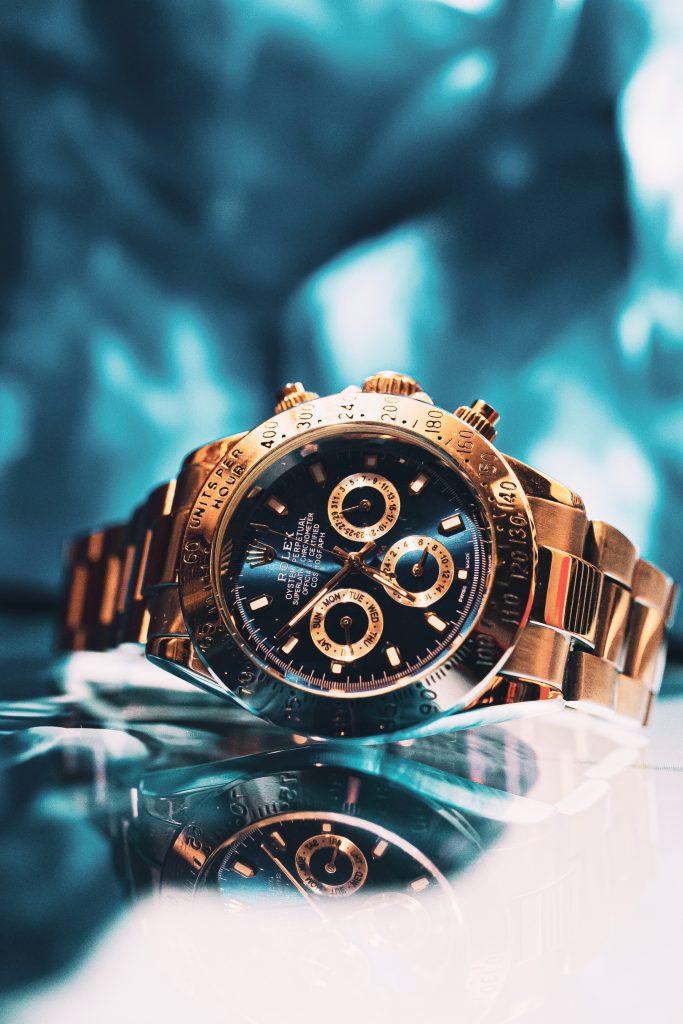
Men wore pocketwatches until the early 20th century; wristwatches were nearly exclusively worn by women from the start. The very first timepieces were created in the 16th century, which is when the wristwatch concept first emerged. Some claim that Abraham-Louis Breguet produced the first wristwatch in 1810 for Caroline Murat, Queen of Naples. By the middle of the nineteenth century, the majority of watchmakers were producing a variety of wristwatches for women, frequently sold as bracelets.
Towards the end of the nineteenth century, military men began to wear wristwatches as it became more and more clear how crucial it was to coordinate military operations without accidentally warning the enemy. Officers started wearing their pocket timepieces on their wrist since it was obvious that utilising them while engaged in combat or mounted on a horse was impossible. Although it is likely that they had been making comparable designs since the 1880s, the London-based Garstin Company obtained a patent for the “Watch Wristlet” design in 1893. It was obvious that a market for men’s wristwatches was developing at the time. In the 1880s, British Army officers started wearing wristwatches during military operations in colonies, such as the Anglo-Burma War of 1885.
Electric watch
The 1950s saw the introduction of the first electric-powered timepieces. A steel tuning fork vibrating at 360 Hz, powered by a solenoid operated by a transistor oscillator circuit, or, in a few more sophisticated timepieces that before the quartz watch, a balance wheel powered by a solenoid. These mechanisms kept time. A wheel train continued to mechanically move the hands. Self-winding mechanisms, shockproof balancing pivots, and break-resistant “white metal” mainsprings were commonplace in mechanical watches. Jewel inflation resulted from the jewel mania, and timepieces with up to 100 jewels were created.
Quartz watch
Epson, a Seiko subsidiary and the “brain” behind the quartz revolution, received an order from Seiko in 1959 for the development of a quartz wristwatch. The undertaking had the codename 59A. Seiko had a functional prototype of a portable quartz watch for the 1964 Tokyo Summer Olympics, and this watch served as the official timekeeper for the competition.
The Seiko 35 SQ Astron, the first quartz watch to go into production and the world’s most precise timepiece up until that point, debuted on store shelves on December 25, 1969. Nobody could patent the entire quartz wristwatch movement because the technology was developed with help from the Japanese, Americans, and Swiss; this allowed other manufacturers to participate in the quartz watch market’s explosive rise. This put an end to the mechanical wristwatch legacy’s nearly 100-year reign of dominance in less than ten years.
Smartwatch
A smartwatch is a computer that can be used as a phone, portable music player, or personal digital assistant. It is a wireless digital device that is worn on the wrist. In the early 2010s, some possessed a processor and a mobile operating system that could run a range of mobile apps, giving them some of the general features of a smartphone.
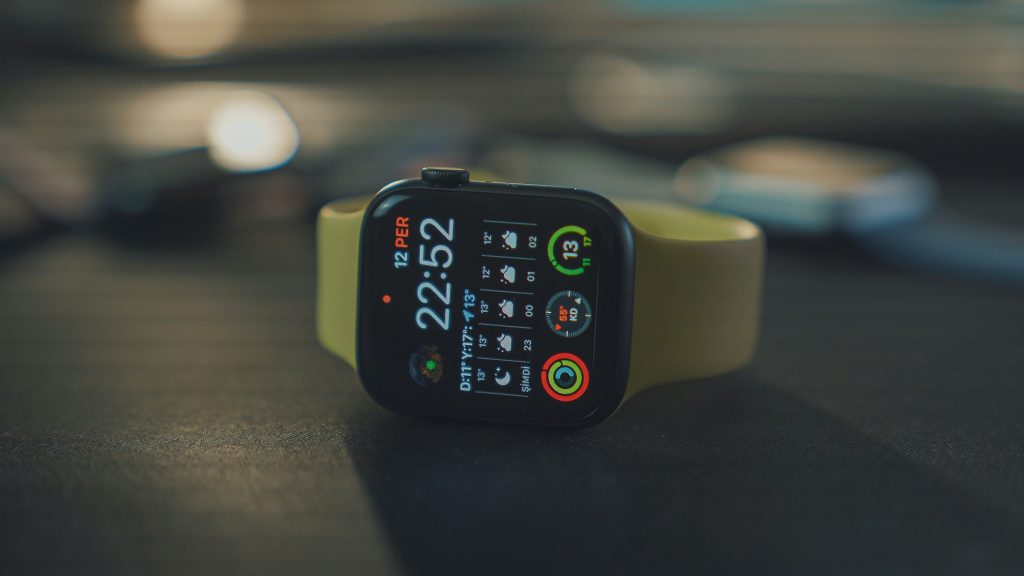
The Linux Watch, created by Steve Mann in 1998 and unveiled on February 7, 2000, was the first smartwatch. Seiko introduced the Ruputer, a 3.6 MHz processor wristwatch computer, in Japan. Samsung introduced the first watch phone in 1999. Its designation was SPH-WP10. It included an integrated speaker and microphone, a protruding antenna, a monochrome LCD screen, and a talk duration of 90 minutes. IBM created a working prototype for a watch that used the Linux os. The battery life of the more advanced version was increased to 12 hours from the original 6 hours. IBM enhanced it with a fingerprint sensor, vibrating mechanism, and accelerometer. The WatchPad was developed by IBM in partnership with Citizen Watch Co. It ran Linux version 2.4 and had a touch-sensitive, 320×240 QVGA monochrome display. It showed Bluetooth, calendar software, 8 MB of RAM, and 16 MB of flash memory. It cost roughly $399 and was marketed for businesspeople and students. The Wrist PDA was a watch by Fossil that ran Palm OS, had 8 MB of RAM, 4 MB of flash memory, an inbuilt stylus, and a 160×160 resolution. It was withdrawn in 2005 after receiving negative feedback about its 108 gramme weight.
The WatchPad was developed by IBM in partnership with Citizen Watch Co. It ran Linux version 2.4 and had a touch-sensitive, 320×240 QVGA monochrome display. It showed Bluetooth, calendar software, 8 MB of RAM, and 16 MB of flash memory. It cost roughly $399 and was marketed for businesspeople and students. The Wrist PDA was a watch by Fossil that ran Palm OS, had 8 MB of RAM, 4 MB of flash memory, an inbuilt stylus, and a 160×160 resolution. It was withdrawn in 2005 after receiving negative feedback about its 108 gramme weight.
Microsoft unveiled the SPOT wristwatch at the start of 2004. The company used SPOT technology to show how it worked with clocks, weather stations, and coffee makers. Through FM waves, the smartwatch received information such as weather, news, stocks, and sports scores. To utilise it, users had to purchase a subscription. The Sony Ericsson LiveView is a wearable watch by Sony Ericsson that functions as an external Bluetooth display for an Android smartphone. A creative smartwatch called Pebble raised $10,3 million on Kickstarter between April 12 and May 18. This timepiece had a Sharp 32 mm 144 × 168 pixel black and white memory LCD with a backlight, vibrating motor, magnetometer, ambient light sensor, and three axis accelerometer. Utilizing Stonestreet One’s Bluetopia+MFI software stack, it can communicate with an Android or iOS device using both Bluetooth 2.1 and Bluetooth 4.0. Companies producing smartwatches or working on their development as of July 2013 include Acer, Apple, BlackBerry, Foxconn, Google, LG, Microsoft, Qualcomm, Samsung, Sony, VESAG, and Toshiba. From this list, significant names include HP, HTC, Lenovo, and Nokia. At CES 2014, many smartwatches were unveiled. The device had a built-in 3G modem and a curved AMOLED display. Apple Inc. stated on September 9, 2014, that the Apple Watch, its first smartwatch, would go on sale in early 2015. In early 2004, Microsoft unveiled the Microsoft Band, a smart fitness tracker and the company’s first watch since SPOT.
The Garmin Fenix 5 and the Casio WSD F20 were the top watches at CES 2017. With built-in LTE, the Apple Watch Series 3 could make calls, send messages, and access data even without a close phone connection. Apple unveiled the Series 4 Apple Watch during a keynote in September 2018. It included a bigger display and an EKG tool to find irregular heartbeats. In the same month, Qualcomm unveiled the Snapdragon 3100 processor. It is a replacement for the Wear 2100 with improved power efficiency and a separate low power core that can handle both standard watch operations and a little bit more complicated ones like step tracking.


